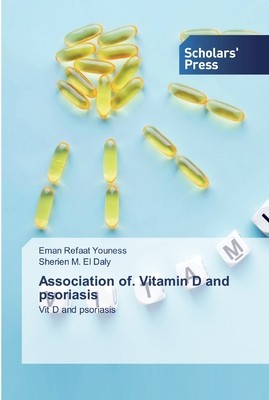
- We will send in 10–14 business days.
- Author: Eman Refaat Youness
- Publisher: Scholars' Press
- ISBN-10: 6138922042
- ISBN-13: 9786138922049
- Format: 15.2 x 22.9 x 0.3 cm, softcover
- Language: English
- SAVE -10% with code: EXTRA
Reviews
Description
Vitamin D is a group of fat-soluble secosteroids responsible for increasing intestinal absorption of calcium, magnesium, and phosphate, and multiple other biological effects. The major natural source of the vitamin is synthesis of cholecalciferol in the lower layers of epidermis skin through a chemical reaction that is dependent on sun exposure. Vitamin D from the diet, or from skin synthesis, is biologically inactive. A protein enzyme must hydroxylate it to convert it to the active form. This is done in the liver and in the kidneys.
EXTRA 10 % discount with code: EXTRA
The promotion ends in 19d.03:17:08
The discount code is valid when purchasing from 10 €. Discounts do not stack.
- Author: Eman Refaat Youness
- Publisher: Scholars' Press
- ISBN-10: 6138922042
- ISBN-13: 9786138922049
- Format: 15.2 x 22.9 x 0.3 cm, softcover
- Language: English English
Vitamin D is a group of fat-soluble secosteroids responsible for increasing intestinal absorption of calcium, magnesium, and phosphate, and multiple other biological effects. The major natural source of the vitamin is synthesis of cholecalciferol in the lower layers of epidermis skin through a chemical reaction that is dependent on sun exposure. Vitamin D from the diet, or from skin synthesis, is biologically inactive. A protein enzyme must hydroxylate it to convert it to the active form. This is done in the liver and in the kidneys.


Reviews